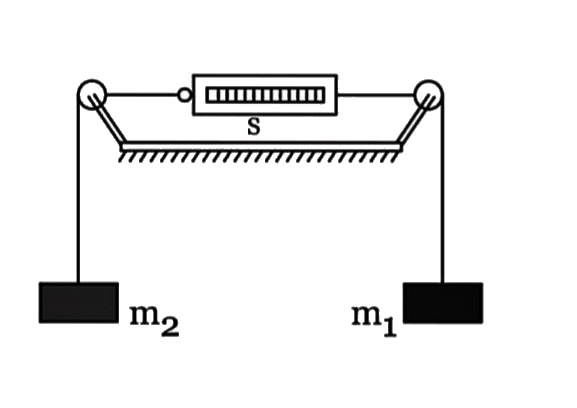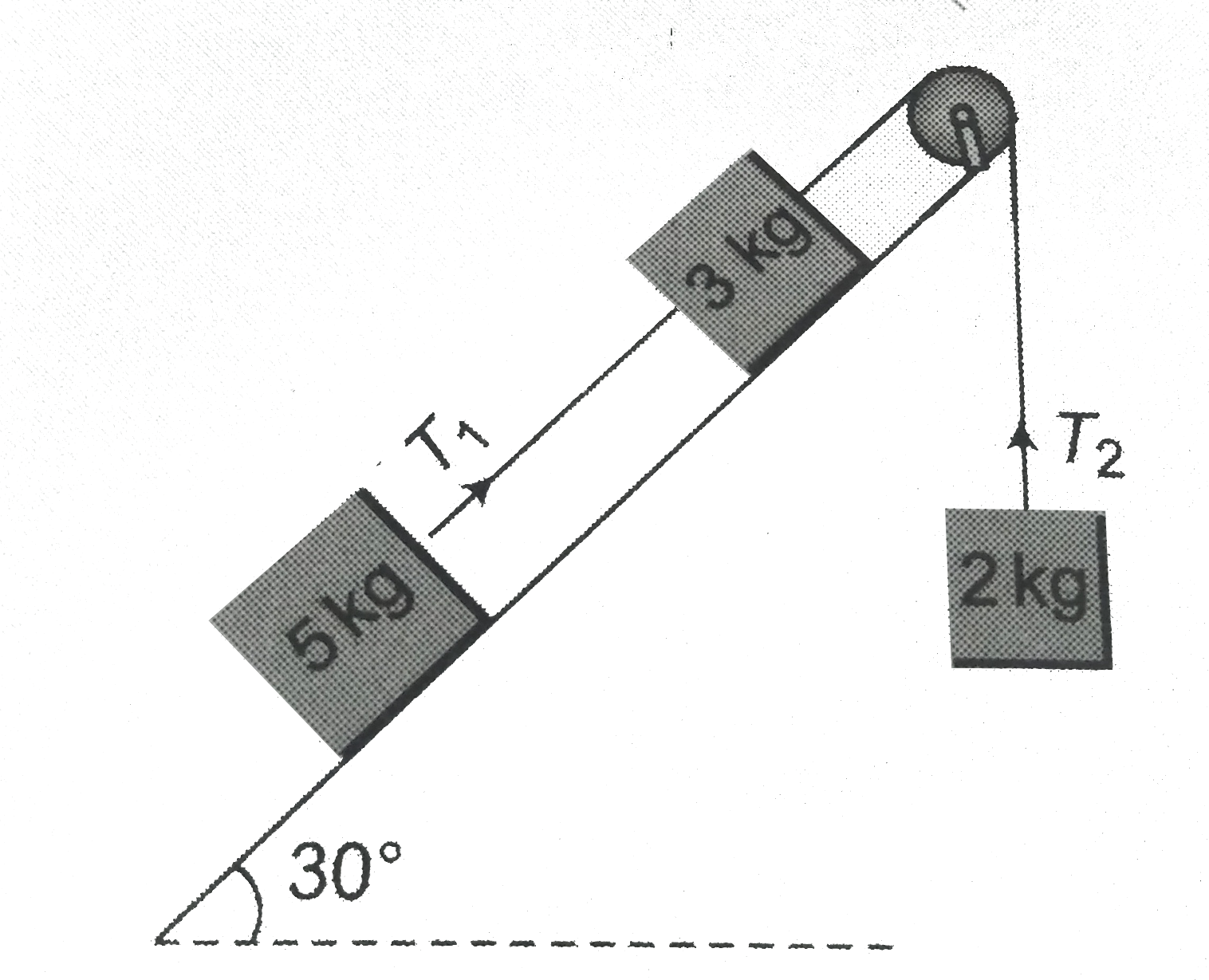In the arrangements shown, the pulleys, strings and springs are weightless and the systems can move freely without friction The extension of spring in 1 is x1 and that in 2 is x2 Then
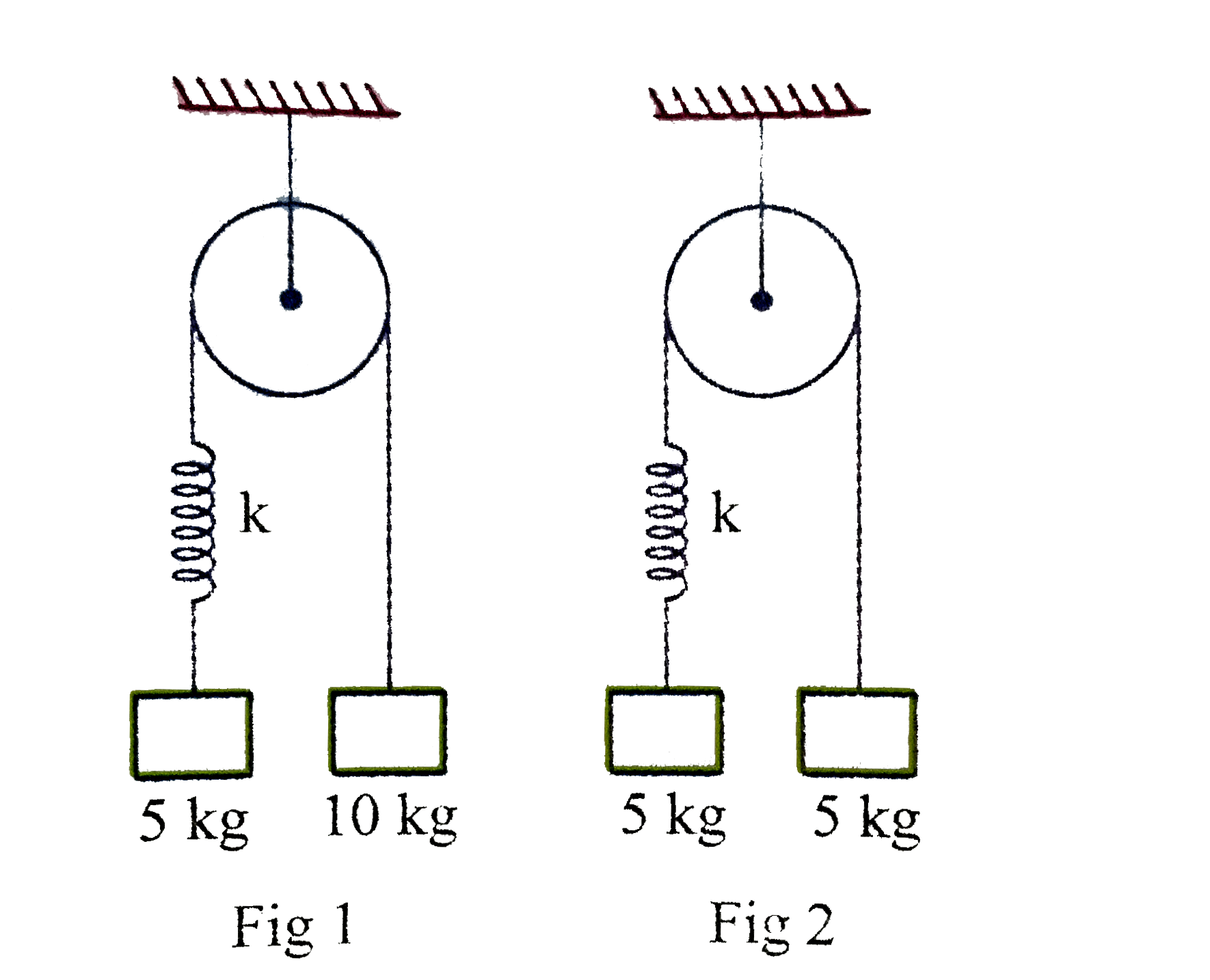 .
.
x1=x2
x2>x1>0
x1>x2=0
x1>x2>0
The correct Answer is:D
In figure I Tension T1=20g/3, in figure II Tension
T2=5g So, x1>x2>0 .
Topper's Solved these Questions
- BOOK - NARAYNACHAPTER - NEWTONS LAWS OF MOTIONEXERCISE - SINGLE ANSWER QUESTIONS Passage -11videos
NEWTONS LAWS OF MOTION
- BOOK - NARAYNACHAPTER - NEWTONS LAWS OF MOTIONEXERCISE - INTEGER TYPE QUESTIONS23videos
NEWTONS LAWS OF MOTION
- BOOK - NARAYNACHAPTER - NEWTONS LAWS OF MOTIONEXERCISE - NCERT BASED QUESTION33videos
NEWTONS LAWS OF MOTION
- BOOK - NARAYNACHAPTER - MOTION IN A STRAIGHT LINEEXERCISE - Level 2 H.W29videos
MOTION IN A STRAIGHT LINE
- BOOK - NARAYNACHAPTER - OSCILLATIONSEXERCISE - EXERCISE - IV41videos
OSCILLATIONS
Similar Questions
Knowledge Check
- Question 1 - Select One
In the arrangement shown, the pulleys are fixed and ideal, the strings are light, m1>m2 and S is a spring balance which is itself massless. The readings of S (in units of mass) is
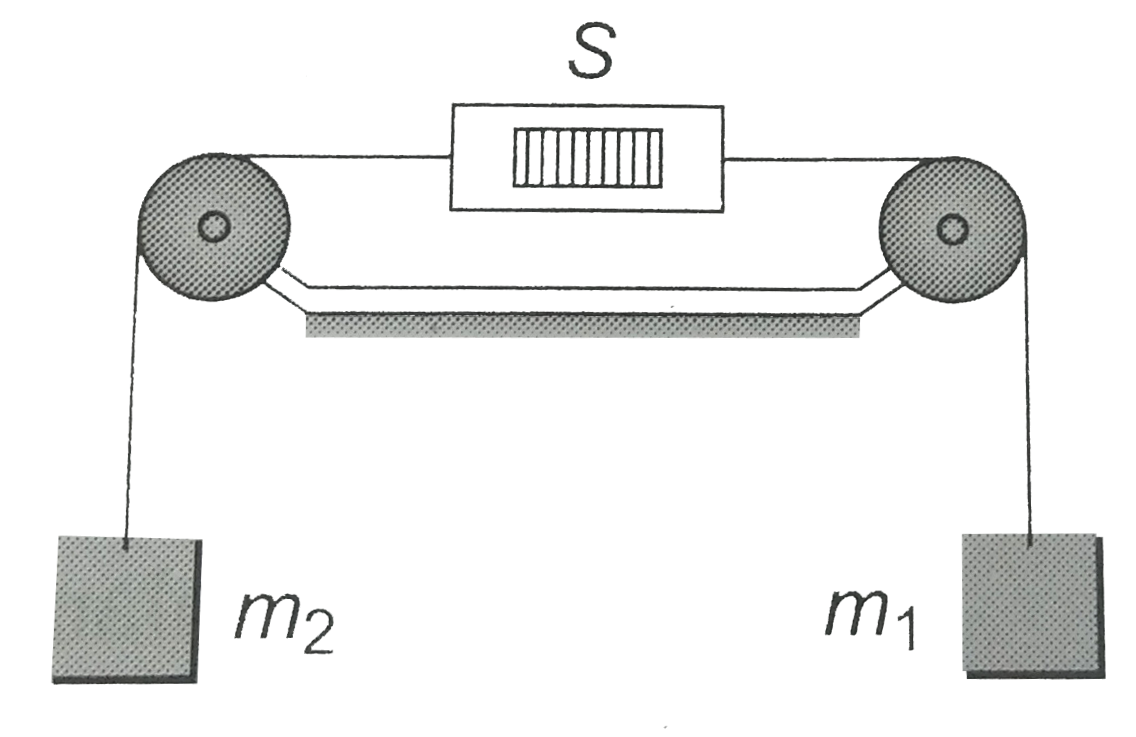 Am1−m2B12(m1+m2)Cm1m2m1+m2D2m1m2m1+m2
Am1−m2B12(m1+m2)Cm1m2m1+m2D2m1m2m1+m2 - Question 2 - Select One
In the arrangement shown in figure pulleys and strings are ideal m1>m2. S is spring balance which is itself massless. The reading of balance will be
 Ag(m1−m2)B12(m1+m2)gCm1m2gm1+m2D2m1m2gm1+m2
Ag(m1−m2)B12(m1+m2)gCm1m2gm1+m2D2m1m2gm1+m2 - Question 3 - Select One
In arrangement shown below, the thread pulley and spring are all massless and there is no friction anywhere. The system is in equilibrium. If thread connecting m4 is cut then just after thread is cut :
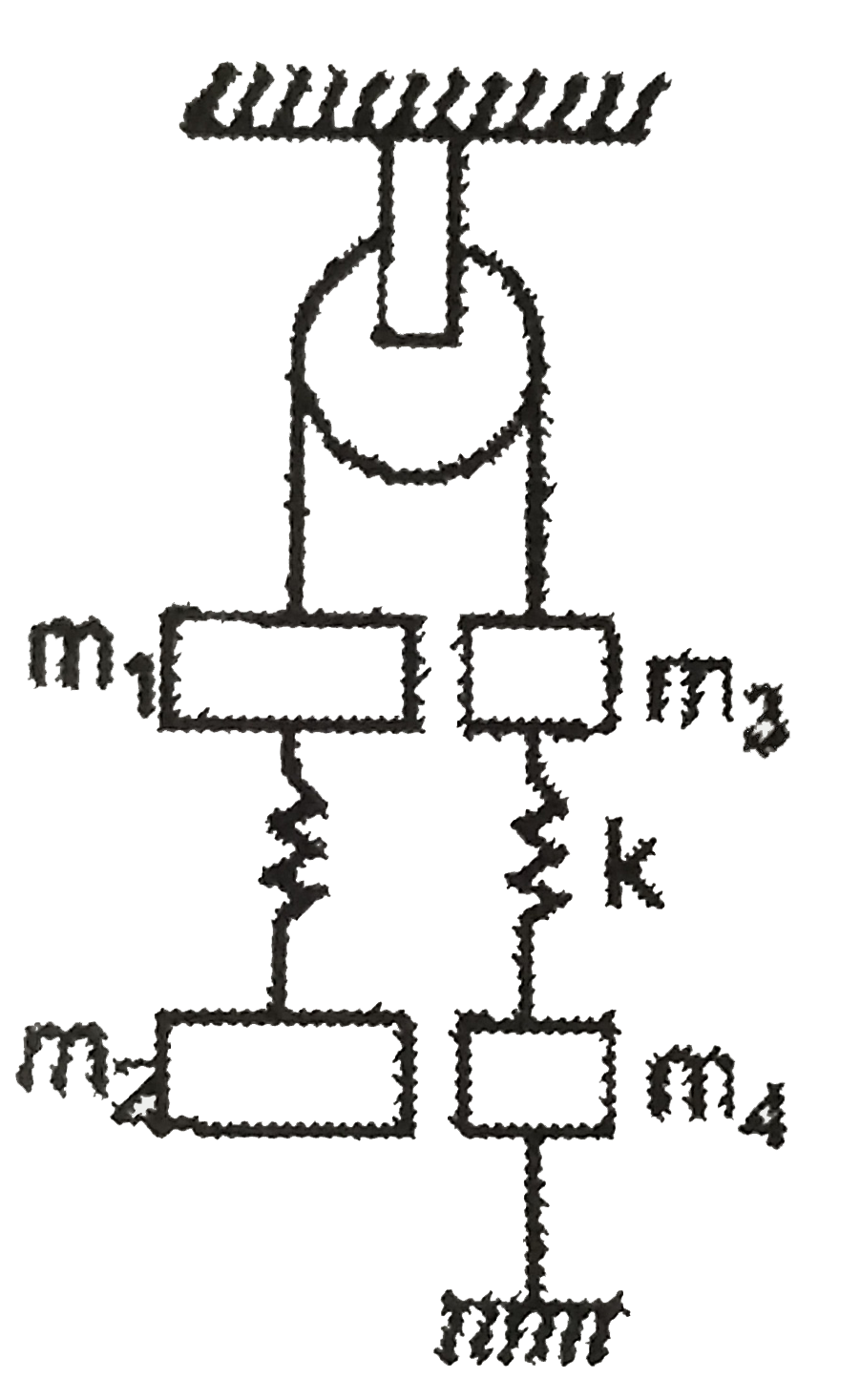 Aacceleration of m4=0Bacceleration of m1=m2=m3=m4=0Cacceleration of m1=m2=m3=0Dacceleration of m4=[(m1+m2)−(m3+m4)]gm4
Aacceleration of m4=0Bacceleration of m1=m2=m3=m4=0Cacceleration of m1=m2=m3=0Dacceleration of m4=[(m1+m2)−(m3+m4)]gm4
In the arrangement shown in fig. m1=1kg,m2=2kg. Pulleys are massless and strings are light. For what value of M, the mass m1 moves with constant velocity.
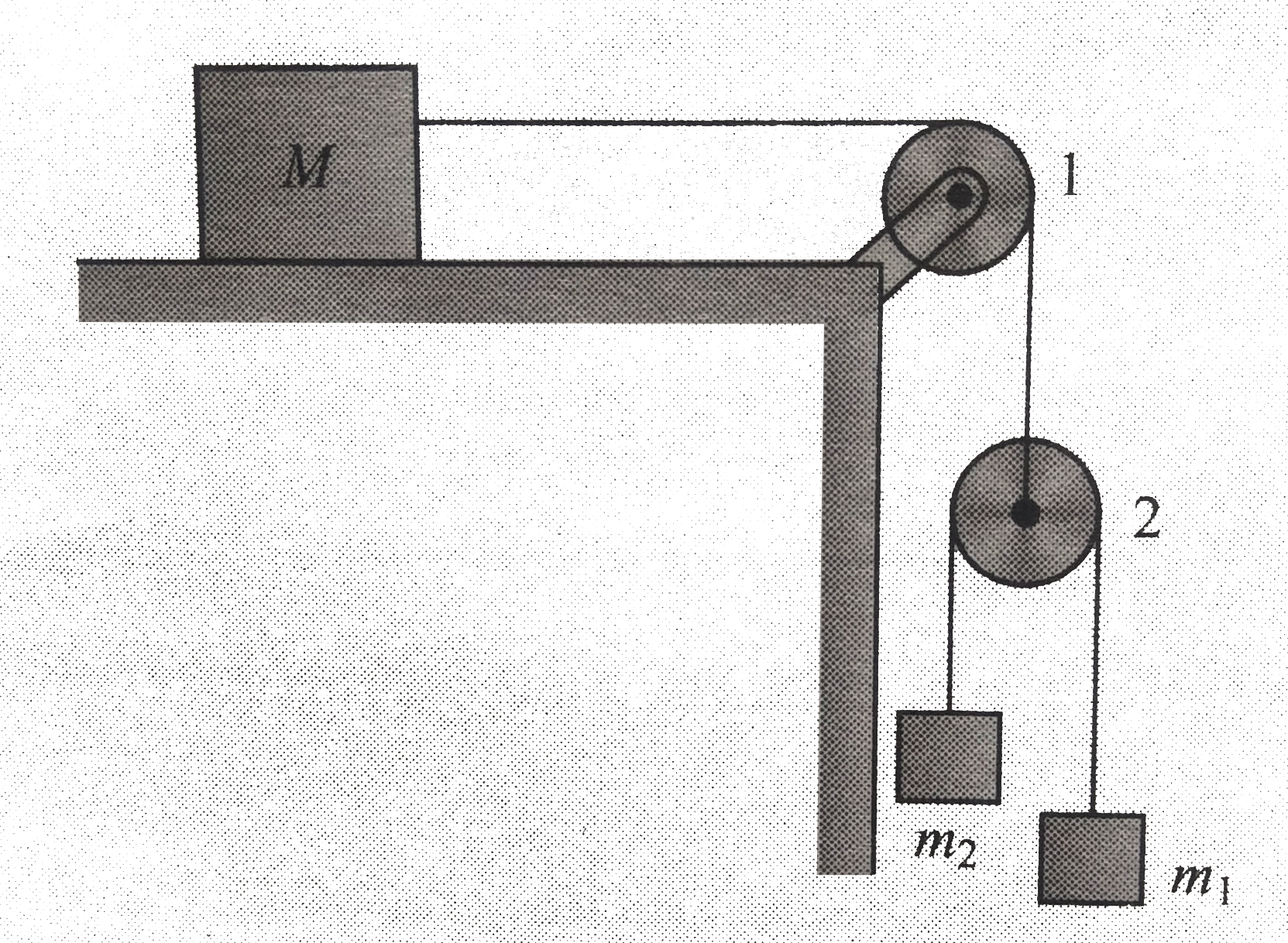 View Solution
View SolutionFor the arrangement shown in figure when the system is released, find the acceleration of wedge. Pulley and string are ideal and friction is absent.
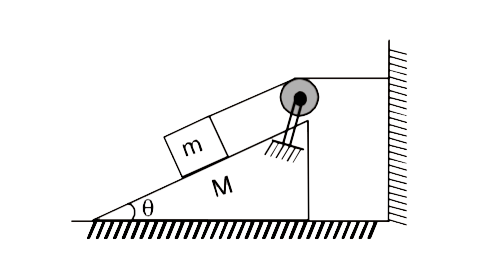 View Solution
View SolutionSystem shown in figure is released from rest . Pulley and spring is massless and friction is absent everywhere. The speed of 5kg block when 2kg block leaves the contact with ground is (force constant of spring k=40N/mandg=10m/s2)
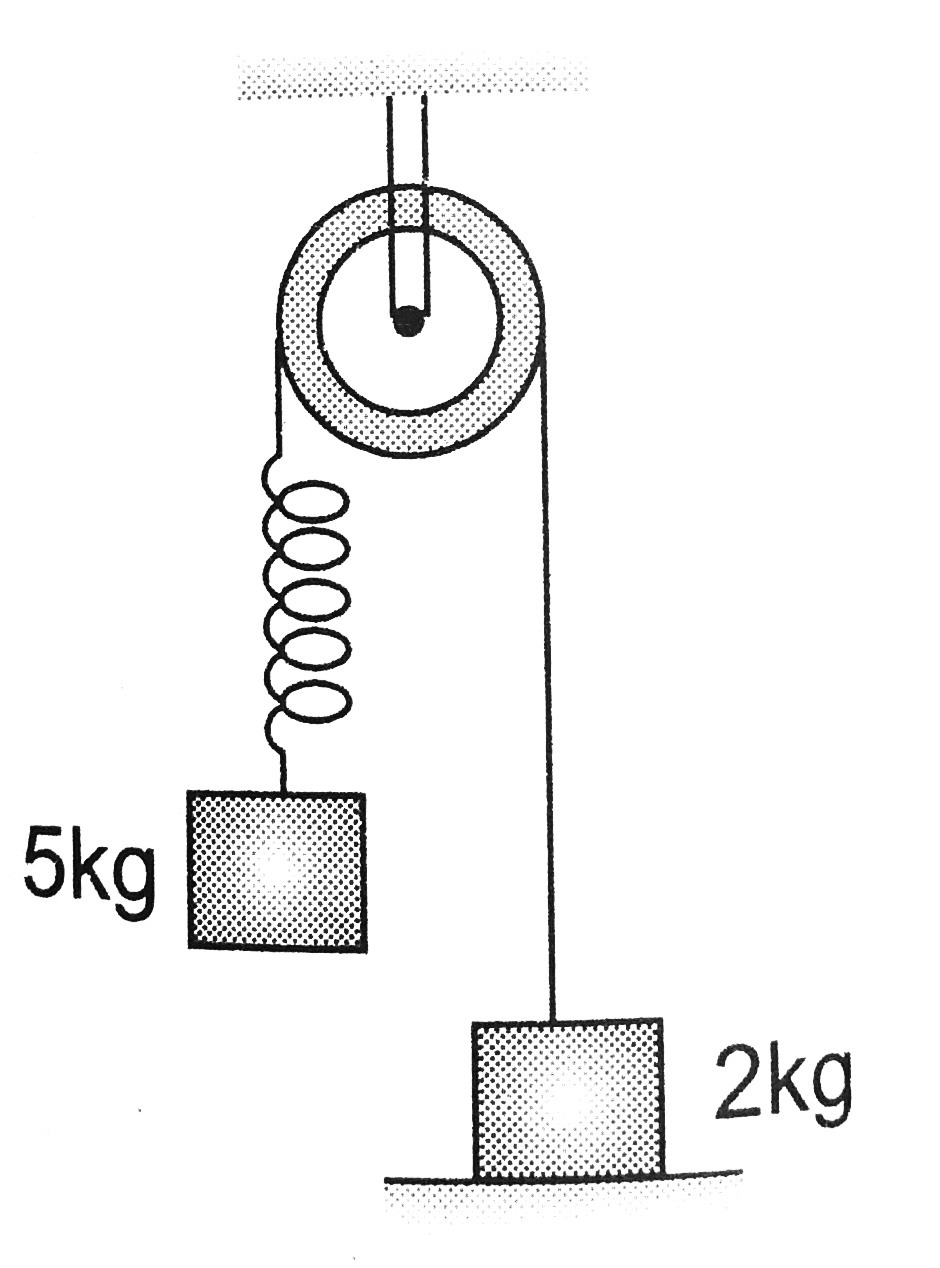 View Solution
View SolutionIn the system shown in fig the pulley is frictionless and the string massless if m1=m2 thrust on the pulley will be:
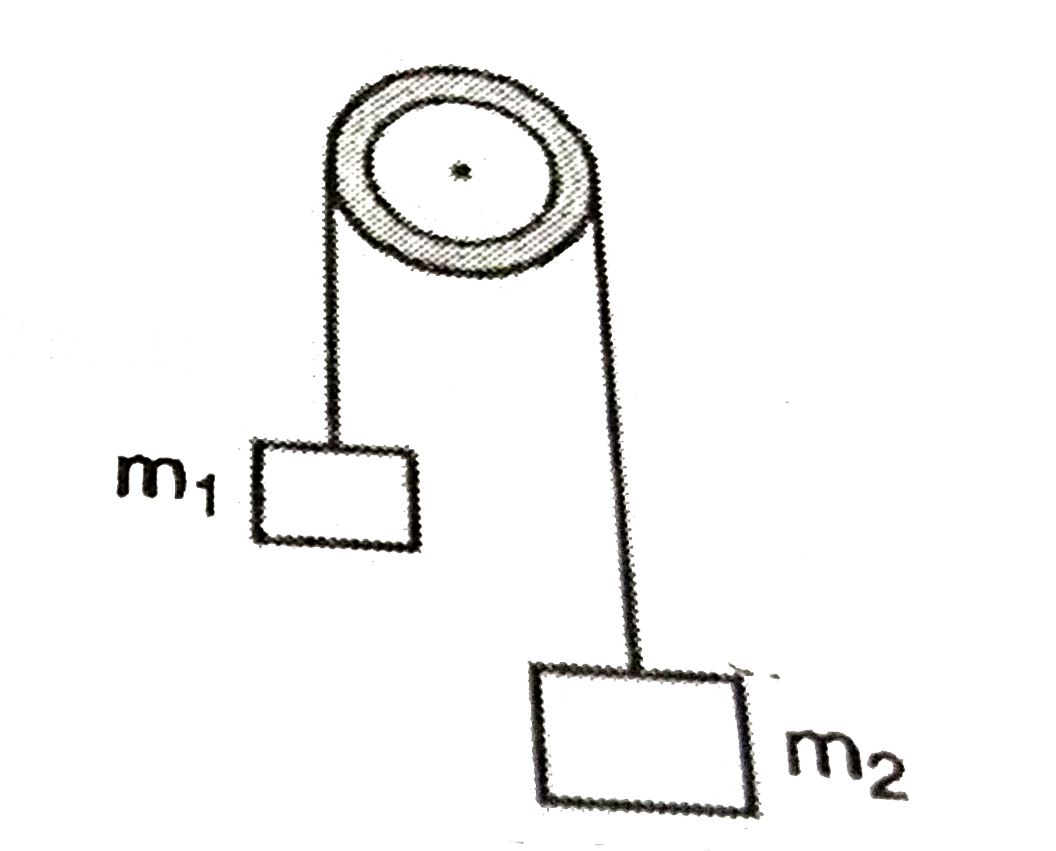 View Solution
View SolutionIn above question, speed of block A, when the extension in spring is xm2, is:
View Solution


